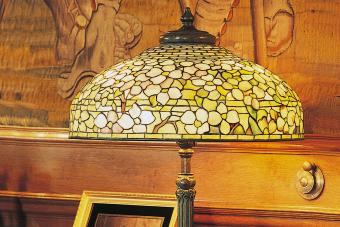
Whether you just inherited a full set of the family silver or you found a great deal at a garage sale, you may be wondering how to find the value of antique silver.
Types of Silver
Real antique silver is never without value but there are a few details which you will need. The first thing you will want to do is to clean the silver thoroughly so that you can more easily read backstamps and markings.
There are two types of silver:
Silverplate: Silverplate is a process of coating a base metal with silver so that the end results looks like the real thing but is actually much less costly. If the item feels light in weight for its size, it may be plated.
Sterling Silver: Sterling is stamped on the back with the word Sterling. It means that the silver is either pure or made of .925 silver with .075 copper added. All Sterling created in the United States after 1850 will be stamped with one of three marks:
- Sterling
- .925
- 925/1000
If the silver does not have this mark, it is not sterling unless it is very old. If you suspect that your silver is quite old and may not be marked you can take it to a professional to have it acid tested. This will determine whether the item is indeed real silver.
Difference Between Silver and Silverplate
Silverplate has no real value. It does not have enough silver in it to have value to someone to melt down and generally does not have much resale value. If it is an heirloom, then it has sentimental value and you should use it often, with love.
Sterling silver is valuable both because it can be refined and thus retains the current price for silver and because the flatware and other pieces usually maintain their resale value and desirability. Antique silver is also valuable as an antique, sometimes far beyond what the silver content would dictate.
Tips on How to Find the Value of Antique Silver
Once your silver has been thoroughly cleaned, you can begin to examine it for backstamps and hallmarks. If the silver is marked sterling you can start the process for determining a ballpark value; however, an expert will be needed for an accurate appraisal and evaluation.
If you already know the manufacturer and pattern, you can check the retail price for replacement pieces at a website like Replacements.com. This will give you an idea of both the age and the value of your silver.
If you don't know the manufacturer or pattern, then you will want to find that first. Look on the back of your silver for a hallmark. It will be different from the sterling stamp. You can find a comprehensive guide at this online encyclopedia of silver hallmarks.
Once you find the manufacturer then you will need to find the pattern. This can be done by describing the pattern and manufacturer in a Google search. For example, if you type in Tiffany silver pattern vines and leaves you will find several images. If one of the images matches you will have found your pattern.
If that doesn't work you will have a more tedious job but it can still be done. You can go to Replacements.com to the area designated to the manufacturer of your silver. Scroll through the images until you can match yours.
Helpful Websites and Guides to Antique Silver
One of the best things you can do is to invest in a good price guide to antique silver. Some to consider are:
- The Price Guide to Antique Silver by Peter Waldron
- Warman's Sterling Silver Flatware: Value and Identification Guide by Phil Dreis
- Silver Identification and Price Guide by Tony Curtis
There are some websites which have excellent pictures and information as well. Here are some to check:
Knowing how to find the value of antique silver is only part of evaluating it. Ultimately, for an accurate appraisal and evaluation you will want to take your silver to a local appraiser. This is the only way to be sure of the value of your silver for either resale or insurance purposes.
You may be also interested in these articles about silver:







